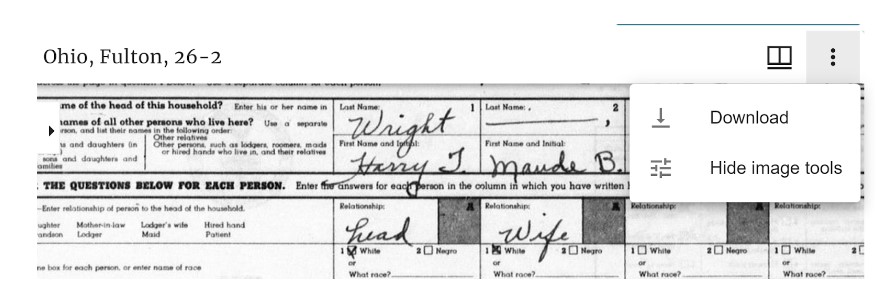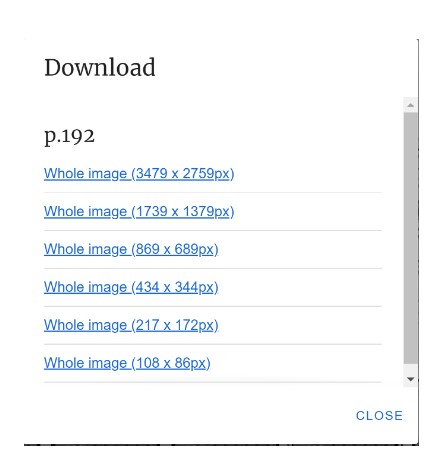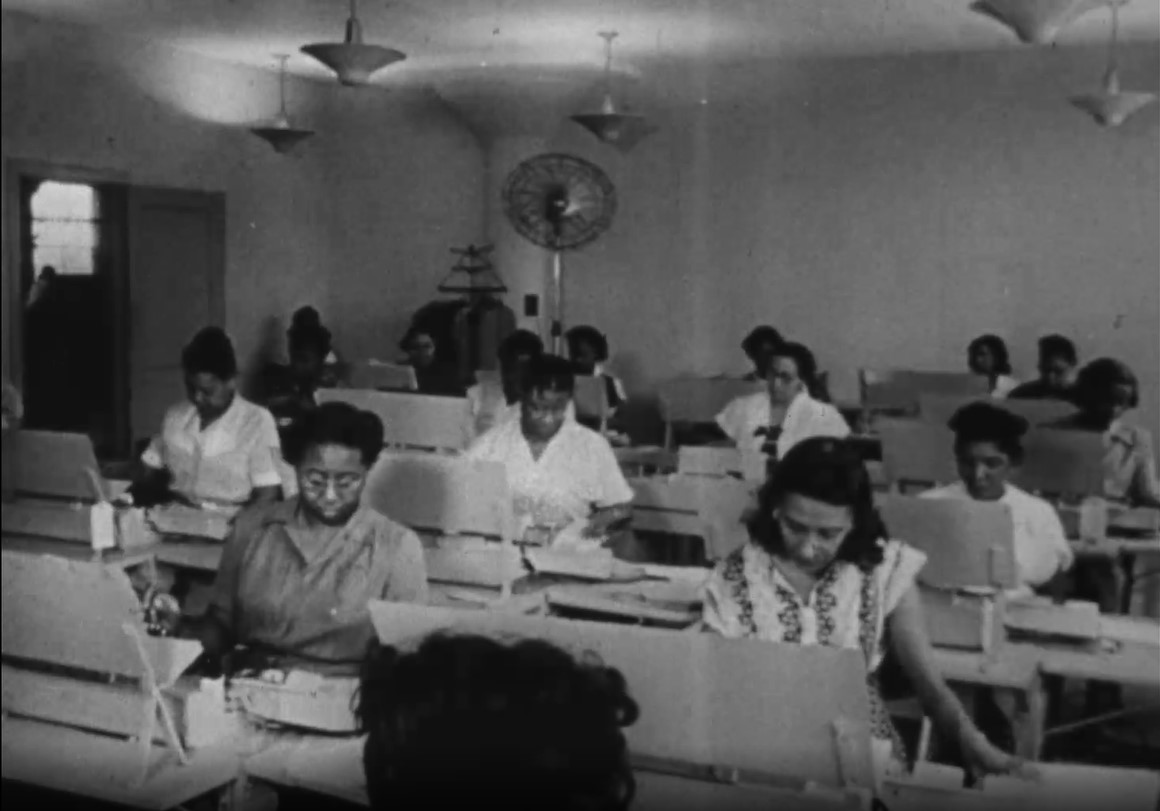
Frequently Asked Questions (FAQs) about the 1950 Census
Is there a fee to search or download the 1950 Census?
- No. There is no fee to access the 1950 Census.
Is there a name index to the 1950 Census?
- Yes, you can search the 1950 census by name. Please note that the name index is not 100% accurate because it is based on optical character recognition (OCR) and artificial intelligence/machine learning. The website transcription tool enables users to submit name updates, which improves the accuracy of the name index and makes the records more accessible for everyone.
If my name search doesn’t yield results, how can I locate people in the 1950 Census?
You can also locate person names by identifying the enumeration district in which they lived in 1950 and then browsing the census population schedules for that enumeration district. Digital copies of the enumeration district maps are available here as well as in the National Archives Catalog.
How can I locate someone in the 1950 Census if I don't know where he or she lived?
- City directories, telephone directories, and other sources from circa 1950 may provide addresses from around 1950. For suggestions and more information, see "Getting Ready for the 1950 Census " by Steve Morse and Joel Weintraub.
Where can I find blank copies of 1950 Census population census schedule forms?
Why are the census records not in color?
- In 1952, the Census Bureau microfilmed the original paper population census schedules using black-and-white microfilm photography. In 1961-1963, the Census Bureau destroyed the original paper schedules after determining they were no longer needed. NARA has provided the best possible digital gray-scale images from the black-and-white microfilm received from the Census Bureau. The microfilm camera operators sometimes shot duplicate images and retakes sections (images refilmed to ensure legibility or correct omissions).
The Enumeration District’s sheet (page) numbers skip from “x” to 71. Are there pages missing?
- No. The enumerator was to number the sheets (pages) of the census form in order beginning with “1” (one). Nearly all Enumeration Districts could be completed on fewer than 70 pages. Persons enumerated out of order were counted on sheets beginning with the number “71.” Therefore, if a person is on a sheet numbered 71 or higher, the researcher will know that person was enumerated out of order for some reason that may be indicated on those sheets, or deduced from header information. Any “skipped” page numbers under 71 were not needed and not used.
Was everyone counted on the standard Form P1, 1950 Census of Population and Housing?
- No. The 1950 census was the last census in which most people were visited by an enumerator with a large multi-family form (Form P1, 1950 Census of Population and Housing). Different forms were used in selected areas in Michigan and Ohio. Self-enumeration on “household” forms was tested in Ingham and Livingston Counties, Michigan, and Franklin County, Ohio. In addition, “household” forms were also tested in selected Enumeration Districts in Genesee County, Michigan, and in Coshocton, Defiance, Delaware, Fulton, Henry, Knox, Licking, Lucas, Ottawa, Paulding, Putnam, Richland, Van Wert, and Williams Counties, Ohio, but the enumerators completed the forms for households in those areas.Different standard census forms were used in Alaska (P82), Hawaii (P87), American Samoa (P80), Guam (P85), Panama Canal Zone (P91), Puerto Rico (P93), and the U.S. Virgin Islands (P97).
- Form P2, Individual Census Report, was used for military personnel living in barrack-type facilities on U.S. soil; travelers enumerated at hotels, YMCAs, and campgrounds; and possibly in other situations. Different standard Individual Census Report forms were used in U.S. territories. However, information on Individual Census Reports was usually copied onto the Form P1, 1950 Census of Population and Housing (or equivalent territorial form).
- Form P4, Crews of Vessels Report, was used for crew members of U.S.-flag commercial and military vessels in U.S. and territorial ports. However, information on Crews of Vessels Reports was usually copied onto the Form P1, 1950 Census of Population and Housing (or equivalent territorial form).
- The Bureau of the Census later estimated that the census undercounted (missed) approximately 4.1 percent of the population.
How were Native Americans counted?
- Most Native Americans living on Indian Reservations were enumerated both on the standard Form P1, 1950 Census of Population and Housing, and on the Form P8, Indian Reservation Schedule.
- Native Americans who lived in Alaska, Oklahoma, or not on a reservation were enumerated on the standard Form P1 only.
Were overseas U.S. civilians and military personnel enumerated?
- The Census Bureau entered into cooperative agreements with the U.S. Departments of Defense and State, and the U.S. Maritime Administration, to provide information on personnel and dependents under their authority. However, information on most overseas personnel was collected for informational purposes only and was not retained.
- Census schedules exist on microfilm for military personnel stationed in Alaska, Hawaii, American Samoa, Guam, Panama Canal Zone, Puerto Rico, and the Virgin Islands of the United States. Census schedules exist as paper records for personnel on Canton [Kanton], Johnston, Midway, and Wake Islands. The paper census schedules for those four islands were retained for unknown reasons in administrative files relating to the 1950 Census by the Census Bureau's Territories and Possessions Branch of the Population and Housing Division.
- The name and rank of a few U.S. military personnel overseas are included in correspondence in “Binder 36-C – Members of Armed Forces and U.S. Citizens Abroad” (NAID 205683289) in the Census Bureau’s administrative records relating to the 1950 census.
Where were college students enumerated?
- College and university students were enumerated at their dormitory room, off-campus apartment, or other residence if that was their usual place of residence during the school year.
Where are the reverse (back) sides of the census forms?
- The reverse side of most 1950 census forms asked questions concerning the characteristics of the inhabitants' housing. The housing (reverse) side was not microfilmed (in 1952) at the same time as the population (front) side of the form, so they are no longer extant. Only the aggregate statistical housing data remains preserved in the published reports of the Bureau of the Census.
Where are the Infant Cards?
- The Infant Cards upon which enumerators recorded information about babies born in January, February, and March 1950, were deemed to be temporary records and were destroyed by the Bureau of the Census. More information about these cards and the statistical study made from them can be found in the blog post, 1950 Census: Infant Cards and the Special Infant Enumeration Study.
Where are the Agriculture, Irrigation, and Drainage Schedules?
- The Agricultural, Irrigation, and Drainage Schedules upon which information was recorded about agricultural products, irrigation, and drainage were deemed to be temporary records and were destroyed by the Bureau of the Census. Published compilations of statistical data can be found on the Census Bureau website at https://www.census.gov/programs-surveys/decennial-census/decade/decennial-publications.1950.html.
How do I request a certified copy of a page in the 1950 Census?
NARA can provide certified copies of a specifically identified page of the 1950 federal decennial population census schedules for a fee of $35 ($20 for the copy and $15 for the certification). You must provide the name of the individual(s) listed, page number, census year, state, county, and enumeration district.
Interested in ordering certified copies of 1950 Census records? You can request certified copies using Order Online: https://eservices.archives.gov/orderonline.
How did NARA create the name index?
NARA used an Artificial Intelligence Optical Character Recognition text extraction tool to extract the names from digital images of the census schedules. However, this technology cannot produce perfect results due to:
- Illegible handwriting
- Poor image orientation
- Variations in image quality (light, dark, or poor contrast)
- Text obscured by handwritten flourishes from letters on the line above or below.
- Different handwriting styles
- Surnames written only on the line for the Head of Household and other persons in the household with a different surname
Can I help refine the name index?
Yes, the 1950 Census website includes a transcription tool that enables you to edit and add names to the name index. Your transcriptions will increase the accuracy of the name index and make these records more accessible to everyone.
Did NARA extract names from all the forms used in the 1950 Census?
No. Names were extracted from standard 1950 Census schedules that included a Name column, including:
- Form P1, Census of Population and Housing
- Form P80, Population of American Samoa
- Form P82, Population, and Housing of Alaska
- Form P85, Population of Guam
- Form P87, Population and Housing of Hawaii
- Form P91, Population of Panama Canal Zone
- Form P93, Population of Puerto Rico
- Form P97, Population and Housing of U.S. Virgin Islands
- Form P8
Although names were not extracted from other forms, such as Form P12A, Census of Population and Housing (household schedules), you will still be able to transcribe the names on those forms using the transcription tool.
Do you have any search tips?
- Search for a surname plus state and county of residence. Remember that common names such as Smith could yield tens of thousands of results.
- Search for the first and last name of the head of household (plus state and county of residence if known) because the surname was written on the census form only on the line for the head of household and other persons in the household with a different surname.
- If a person has an unusual or unique first name, search for that person by first name plus state and county of residence.
- Do you know the names of your relative’s nearby neighbors? Did they have a less common surname? Search for the neighbor’s head of household or surname (plus state and county of residence).
- Don’t ignore search results that aren’t an exact match - the name may have been extracted incorrectly because of the handwriting. For example, a surname like Gross might have been extracted as Grass or Gress.
What is an Enumeration District (ED)?
In 1950, an Enumeration District (ED) was a geographic area that a single enumerator (census taker) could complete within two weeks in cities or within 30 days in rural areas. Each ED has a two-part number, such as 10-15. The first number (prefix) is the number of the county (or county equivalent) and the second number was a specific geographic area within that county. In addition, some EDs had an added alphabetical suffix, such as 10-15A, 10-15B, 10-15C, and so forth. This occurred when Census Bureau’s District Directors divided the original ED into smaller parts if the original ED was going to be too big (had too many people) to finish on time. In addition, the Census Bureau made a strong effort to recruit school teachers to be enumerators and frequently divided one Enumeration District among several teachers in the same way (10-15A, 10-15B, 10-15C, and so forth). Examples of “county equivalents” include parishes in Louisiana, independent cities in Virginia and other states, districts in Alaska, American Samoa, and elsewhere; and municipalities in Puerto Rico.
What is a “no population” Enumeration District?
No people lived within the geographic boundaries of the Enumeration District. NARA has added a digital placeholder image that reads: Enumeration District Descriptions (EDDs) indicate "no population" or "void."
What is a “VOID” Enumeration District?
Void indicates that the Enumeration District (ED) number was not used and/or there was no geographical location associated with the ED number. NARA has added a digital placeholder image that reads: Enumeration District Descriptions (EDDs) indicate "no population" or "void."
Is there a partial or incomplete Enumeration District?
In some instances, the microfilmed images jumped from one Enumeration District to another. NARA has added a digital placeholder image that reads: “Frames for this Enumeration District (EDs) were not on the original microfilm reel as indicated by the Census Bureau.”
I think there should be more pages for this Enumeration District! Are some pages missing?
In some instances, we thought there should be more pages for an Enumeration District, but there were no additional images on the microfilm. NARA has added a digital placeholder image that reads: “No additional frames for this Enumeration District were on the original microfilm reel.”
Why was there a new or different Enumeration District number?
In some cases, the census schedules were marked with one ED number that was then crossed out or changed to a different ED number. NARA has added a digital placeholder image that reads: “Updated to new Enumeration District Number [new number].”
How do I save an image on the 1950 Census website?
- In the search results, click on the three dots above and to the right of the image.

- Select the image size you wish to download. The larger the image size, the better the image resolution.

I’ve noticed duplicate images in some of the Enumeration Districts. Why is this?
These pages were duplicates on the original roll of microfilm. NARA did not remove duplicates at the time of scanning to reflect the original records as captured during the microfilm process. There are also situations in which there are retakes (images filmed a second time) - so there is the original frame and the retake frame - both will be present in the images.
The Enumeration District description refers to aerial photographs. Where are they?
Although the Census Bureau's written descriptions of Enumeration Districts refer to aerial photographs in their possession at that time, they were not retained by the Bureau and are not in NARA holdings.
